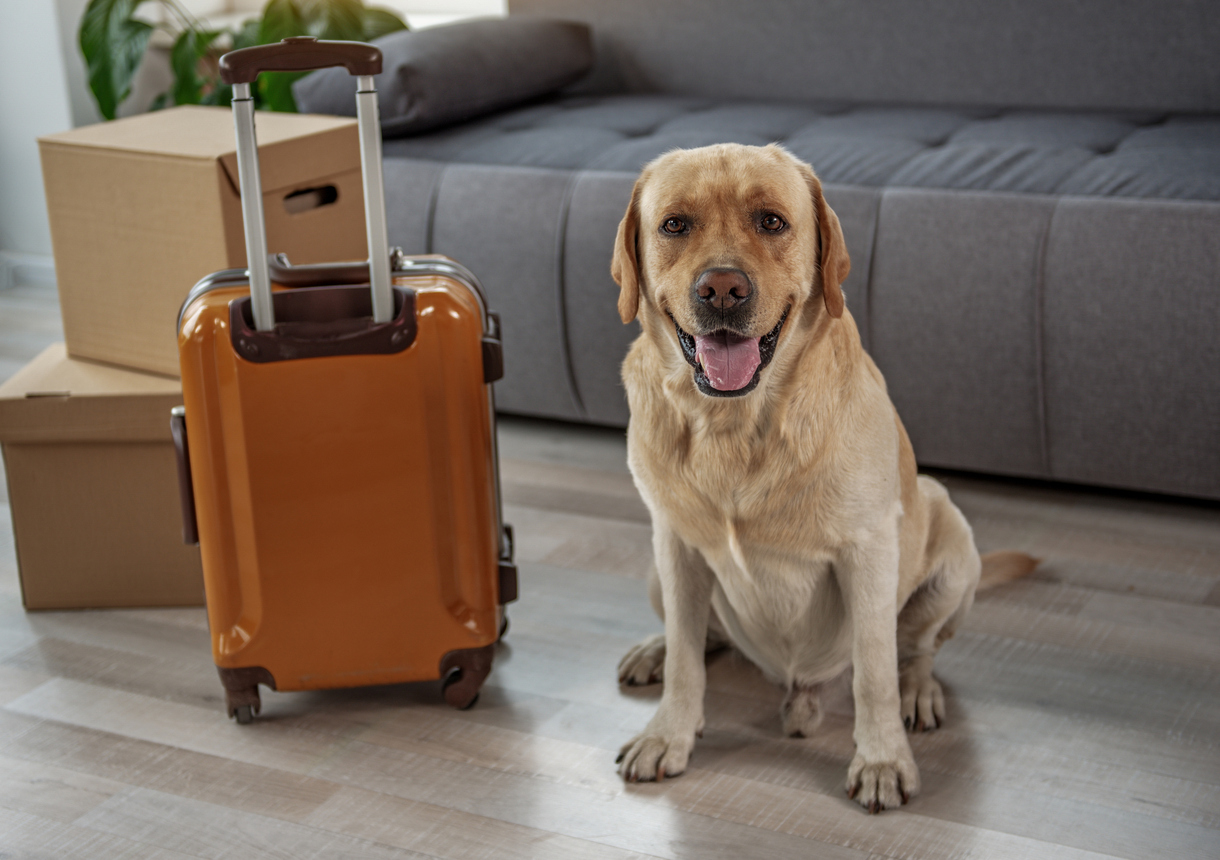You’ve been offered a fresh position, you want to be close to your family members or perhaps you’re looking for an opportunity to make a fresh start. Whatever reason you are moving for, a major change can be exciting and nerve-wracking.
If you’ve got a furry family member, you’ll need to take great care to ensure that their needs are met throughout the planning and implementation of your relocation. Begin your process of moving your dog as early as feasible and conduct extensive research to make sure that everything goes smoothly without any problems. Some pets are more tolerant than others, and others are afraid of change but there are some general rules that may make your relocation more manageable.

The initial preparation for moving your pet
Develop a specific plan for your dog’s health. If you’re driving, be certain your pet has a seatbelt or a cage that will keep him safe. Make sure that your pet is comfortable with the equipment. It may be necessary to slowly desensitize your dog when he doesn’t want to take the car. This must be done over time, so it is best to begin as soon as possible. If you’re moving your pet by plane or train, make sure to comply with the specific requirements set by the airline or railway operator you are traveling with.
Always keep the medical records of your pet at hand in case a health certificate from your veterinarian or vaccination records is requested. Sometimes, you’ll have to travel first to ensure your pet can adapt to a new environment. You must make arrangements to have your pet taken care of by an immediate family member, friend, or in a kennel while you are off from the house. To ensure the comfort of your dog who is anxious about moving, if you’re able to go to your new residence initially, you could set up a play area for him. It could include his favorite toys and an old bed that he’s familiar with, providing the impression of having a safe space to go in the new home.
How to manage your dog in a moving situation
It is best to leave your pet with someone on the day of your relocation. To prevent any mishaps ensure that the movers know your dog is moving with you. He should be provided with a comfortable bed, a toy with his favorite meal or snack, and clean water. Take him for walks and to get him to exercise too. One of the most important suggestions for moving with a dog is a lengthy walk with your pup. This should be the first priority whether packing up the vehicle or getting ready to head to the airport. Apart from providing him with a chance to take a breather as well, this can assist to exhaust him a bit.
Following the secure confinement of your canine inside the vehicle, and prior to the beginning of your journey, you should plan your route in a way that allows you to securely leave your vehicle and give your pet pee breaks as needed, depending on the length of your trip. Here are some helpful suggestions for moving your dog safely:
- It is better to carry snacks that you can hand out on the way instead of a big meal. A water bowl is also a good idea to have at hand in case of requiring it.
- Be aware of the weather conditions as well. If you’re traveling in the summer, leaving your dog in your vehicle at a stop-over is not a viable option.
- You’ll need to look for pet-friendly accommodations if you are planning to travel long distances.
- Check your dog’s security before you open the doors or get out of the vehicle.
It is easy to forget things while you’re moving. The best way to avoid this is to prepare for the dog’s relocation and stick to the plan or use reliable movers – Zeromax.

After your dog has moved, here are some things to be aware of
If you haven’t yet visited your new home before dog relocation, you should take the time to create a space for your pet. It will be advantageous for your pet to have a place where he can escape when the rest of the home is being set up. Take a walk through your new house and yard, observing any potential hazards that may be present for your pet. A gaping hole in the fence or a degraded screen door might result in a dog on the run before you’ve got your feet.
Take your dog out in the new area on a leash during the first few days to allow the dog to become familiar with the sounds and smells of his new environment. Take care to ensure that all valuables, glass objects, chemicals, and prescriptions are secured so that you can stop your dog from nose-diving into a box and discovering things that could be dangerous. Follow a consistent routine for your dog, exactly as you did before the move. Because the dog is stressed after the move, it is possible that he will require the restroom more often.
It may be beneficial to take several more days at the home of your four-legged companion prior to returning to work. You might consider allowing your dog to go away for shorter durations while he adjusts to the new environment. During this transition, your dog should be closely monitored when in the open. To go back to their old haunts, dogs may sometimes climb over fences.
You should know the names of the emergency vet in your area and the general veterinarian. This will ensure that your pet is receiving the best care. Include these names and numbers on your new refrigerator so that you are able to find them. Although they may not be required in an emergency, it is best to have them on hand since it can be stressful for moving dogs. It is possible that your dog will require additional time to adjust to moving from a larger house or apartment. As with everything planned, there will always be obstacles and omissions, but preparing ahead reduces the chance of something catastrophic that might occur and assists pets and moving in the most hassle-free and smooth manner feasible.









Leave a Reply